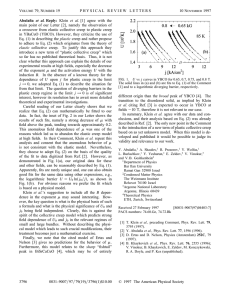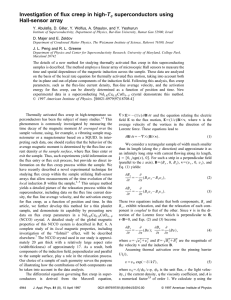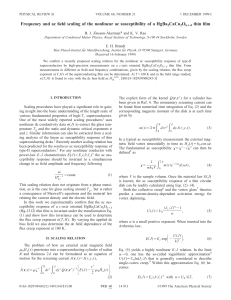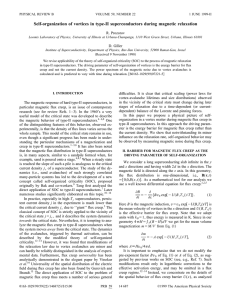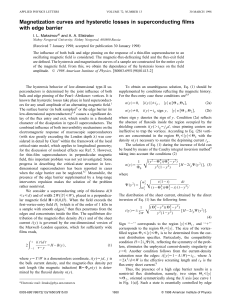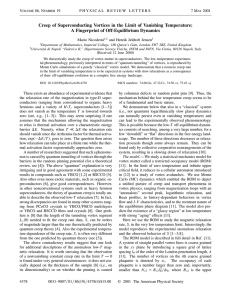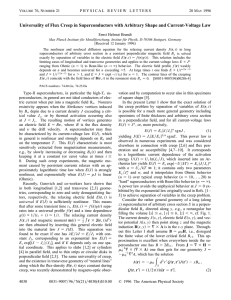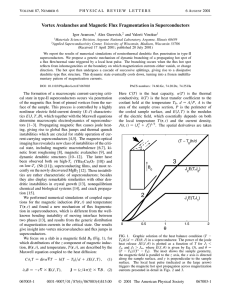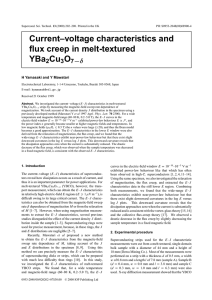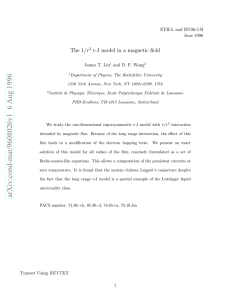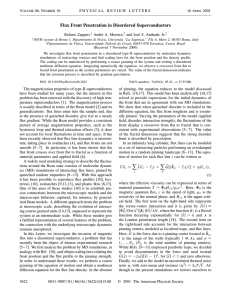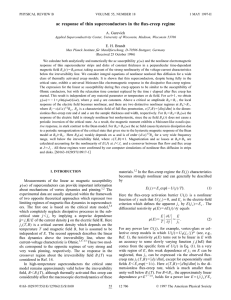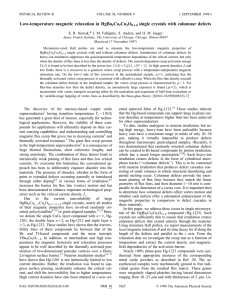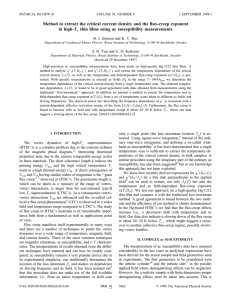Chapter The Consequences of Low-Dimensionality 8.
advertisement
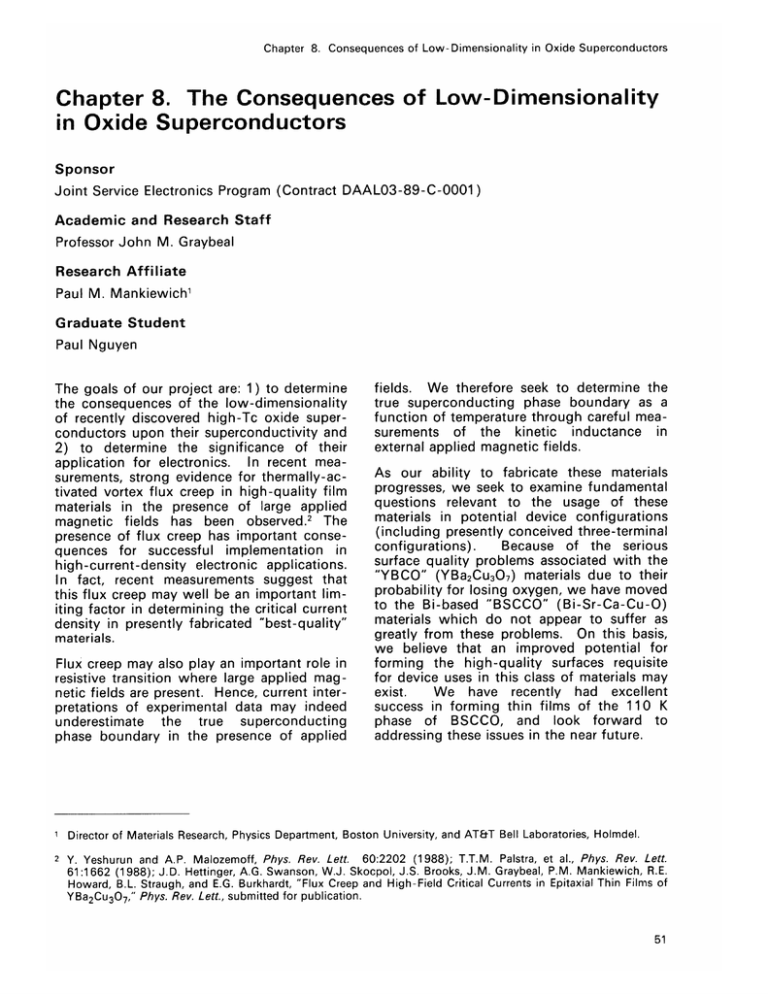
Chapter 8. Consequences of Low-Dimensionality in Oxide Superconductors Chapter 8. The Consequences of Low-Dimensionality in Oxide Superconductors Sponsor Joint Service Electronics Program (Contract DAAL03-89-C-0001) Academic and Research Staff Professor John M. Graybeal Research Affiliate Paul M. Mankiewichi Graduate Student Paul Nguyen The goals of our project are: 1) to determine the consequences of the low-dimensionality of recently discovered high-Tc oxide superconductors upon their superconductivity and 2) to determine the significance of their application for electronics. In recent measurements, strong evidence for thermally-activated vortex flux creep in high-quality film materials in the presence of large applied magnetic fields has been observed.2 The presence of flux creep has important consequences for successful implementation in high-current-density electronic applications. In fact, recent measurements suggest that this flux creep may well be an important limiting factor in determining the critical current density in presently fabricated "best-quality" materials. Flux creep may also play an important role in resistive transition where large applied magnetic fields are present. Hence, current interpretations of experimental data may indeed underestimate the true superconducting phase boundary in the presence of applied fields. We therefore seek to determine the true superconducting phase boundary as a function of temperature through careful measurements of the kinetic inductance in external applied magnetic fields. As our ability to fabricate these materials progresses, we seek to examine fundamental questions relevant to the usage of these materials in potential device configurations (including presently conceived three-terminal Because of the serious configurations). surface quality problems associated with the "YBCO" (YBa 2Cu 307) materials due to their probability for losing oxygen, we have moved to the Bi-based "BSCCO" (Bi-Sr-Ca-Cu-O) materials which do not appear to suffer as greatly from these problems. On this basis, we believe that an improved potential for forming the high-quality surfaces requisite for device uses in this class of materials may We have recently had excellent exist. success in forming thin films of the 110 K phase of BSCCO, and look forward to addressing these issues in the near future. 1 Director of Materials Research, Physics Department, Boston University, and AT&T Bell Laboratories, Holmdel. 2 y. Yeshurun and A.P. Malozemoff, Phys. Rev. Lett. 60:2202 (1988); T.T.M. Palstra, et al., Phys. Rev. Lett. 61:1662 (1988); J.D. Hettinger, A.G. Swanson, W.J. Skocpol, J.S. Brooks, J.M. Graybeal, P.M. Mankiewich, R.E. Howard, B.L. Straugh, and E.G. Burkhardt, "Flux Creep and High-Field Critical Currents in Epitaxial Thin Films of YBa 2 CU3 0 7 ," Phys. Rev. Lett., submitted for publication. Professor Clifton G. Fonstad, Jr. 52 RLE Progress Report Number 131








